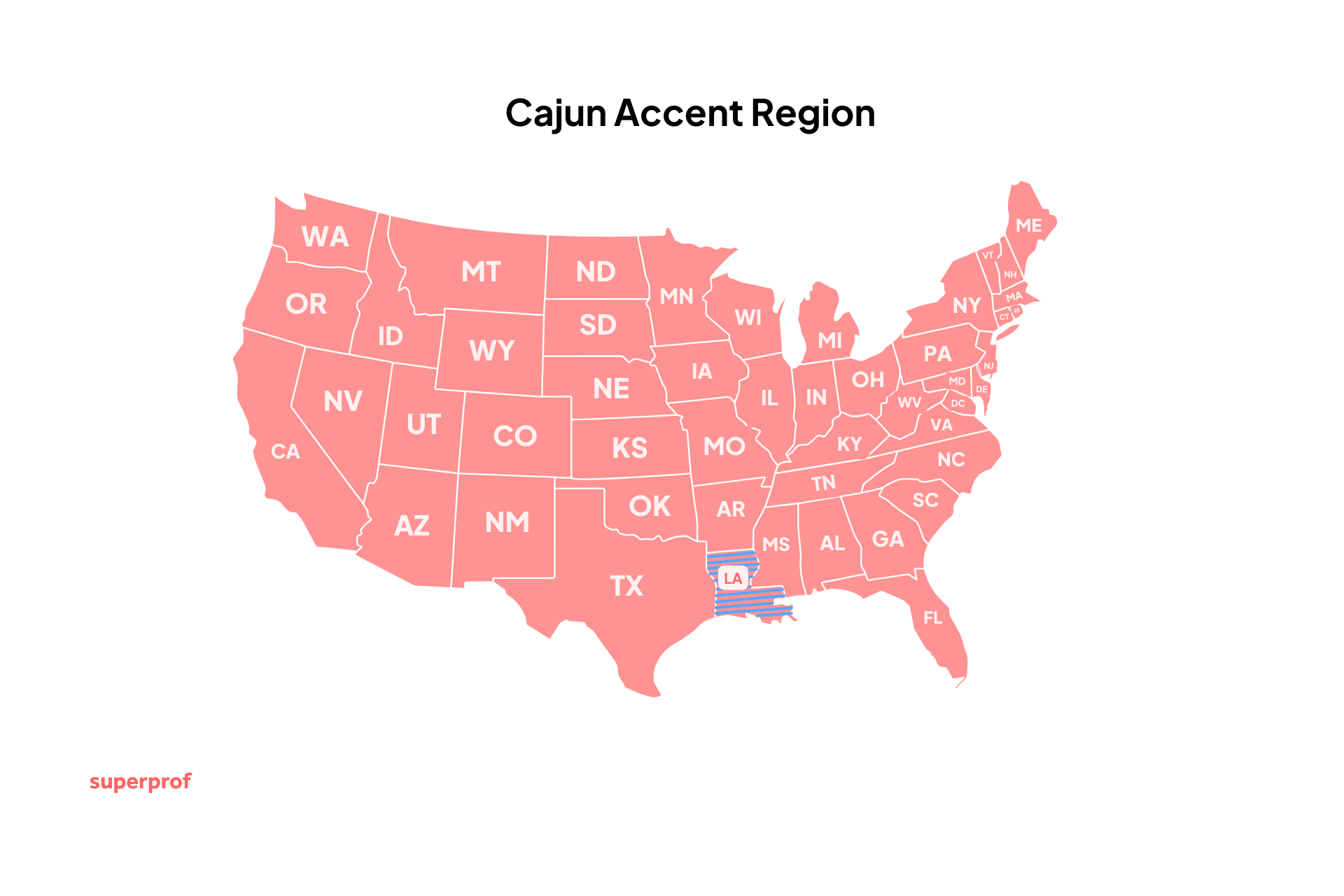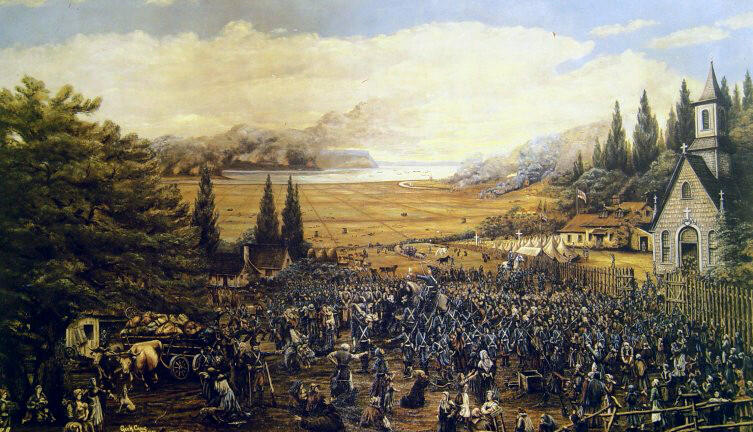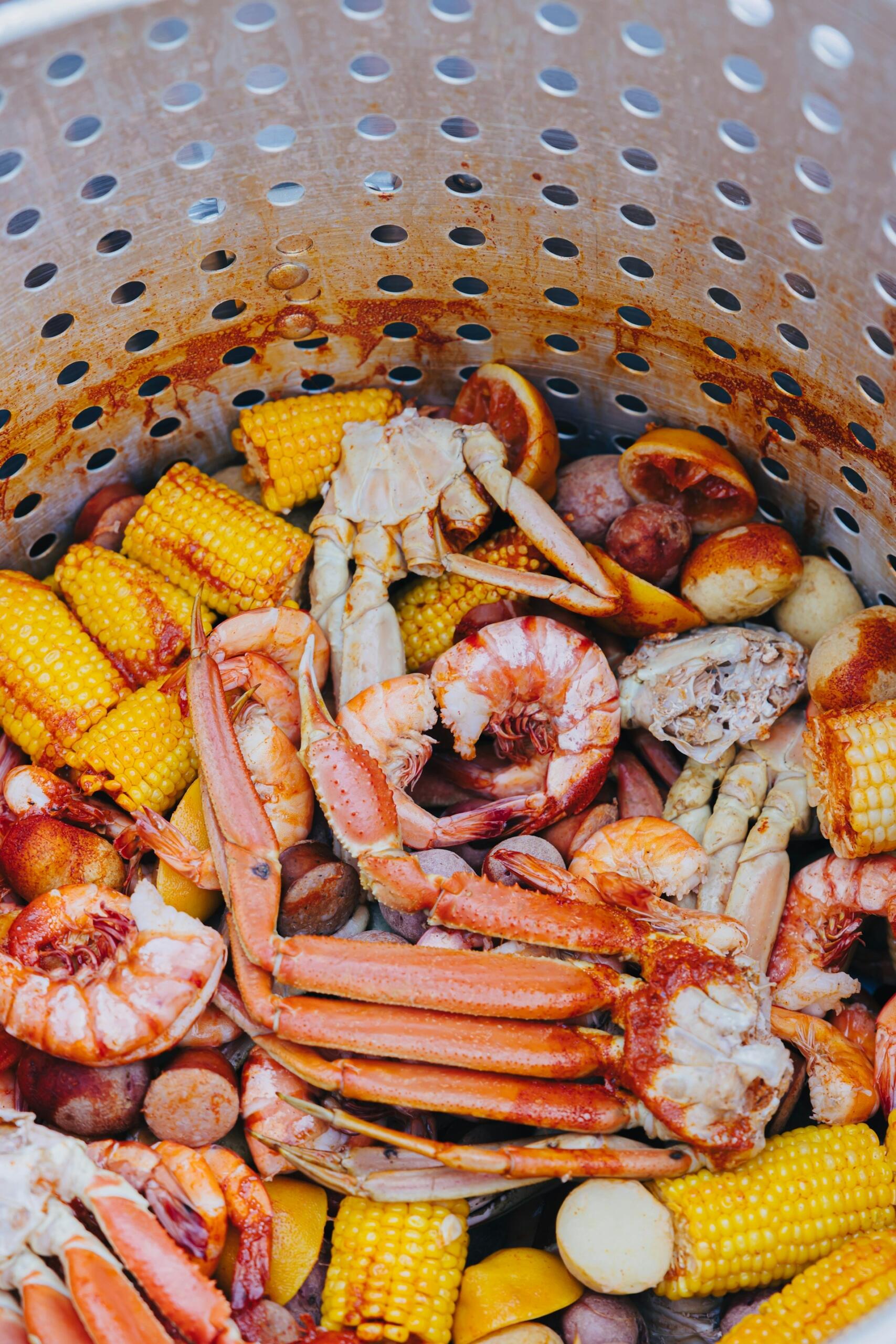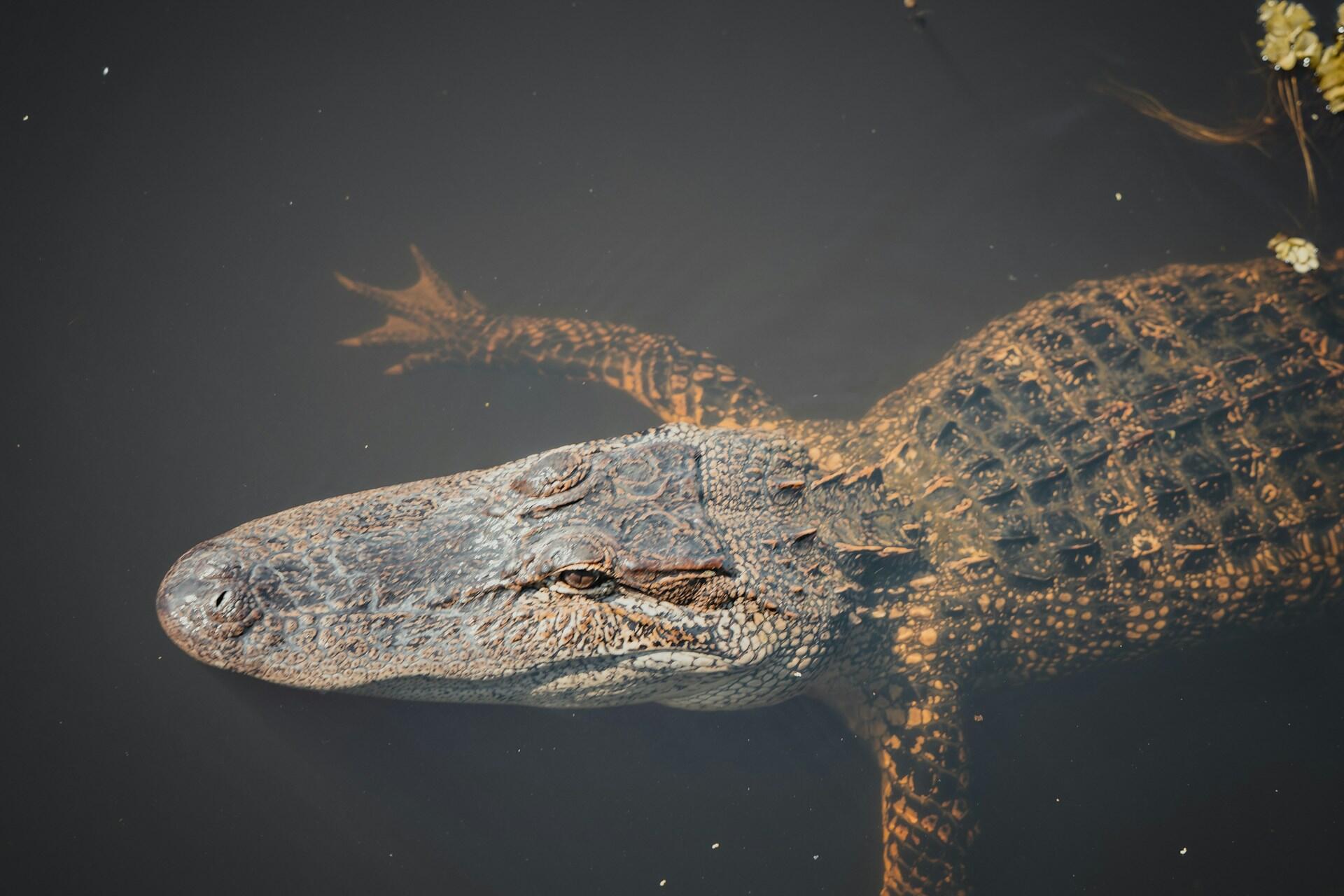Deep in the south of the US, among a variety of other interesting Southern accents, you can find the Cajun accent among the cities and swamps of Louisiana. This particular articulation has a unique history compared to the other articulations across the States. When spoken heavily, many people find it extremely difficult to understand. Find out the basics of this interesting articulation, how to understand it, and learn to speak a little yourself!

Cajun vs Creole
First things first, as outsiders, it can be hard to fully understand the unique parlance situation in Louisiana.
Many think that Cajun and Creole are the same articulation by a different name, but that’s not true. While the two are very similar and are found in the same area, they have different backgrounds.
Cajun English borrows some words, phrases, and grammar rules from the local French dialects.
Creole French is, as the name suggests, the parlance (and dialect) found amongst French speakers in the area. It’s French-based, but highly influenced by many sources, which has changed the nature of the French words. It’s so different from traditional French that it’s become a creole, hence why it’s called Creole (I know, it’s a little confusing!).
Accent: Refers specifically to pronunciation. The vocabulary might differ a little from that of other speakers of the same language, but it is not enough to cause a communication barrier. (e.g., the California accent and Southern accent are both part of American English.)
Dialect: Refers to when an accent also includes enough changes in grammar and vocabulary to create a bit of a language barrier between speakers. Accents are smaller groups within dialects. (e.g., American English vs British English vs Indian English; all are the same tongue, but are different enough to be separated.)
Creole: Refers to the language (with a standard pronunciation, grammar, and vocabulary) that evolves from pidgin languages. Pidgin languages are the broken, incomplete tongues spoken between people who don’t have a common language. (e.g., Mauritian Creole).
Many folks from Louisiana use both; they speak both Creole French and English with a Cajun inflection.
Here are a few more quick notes that are important to know, and hopefully, they won’t confuse you more!
Louisiana French (also called Cajun French) is closer to the French you’d find in Quebec or France.
Cajun and Creole also refer to individuals, not just a language or inflection. They have different family histories, so it’s an important distinction to make. It’s complicated, but in general, Cajuns today are associated with having mostly European ancestors (the Acadians and Spanish), and Creoles are associated with having mostly non-European ancestors (Native American, Black, etc). Of course, there is a lot of overlap and gray areas, and it’s a debated topic with no hard edges.
In this article, we are focusing on the Cajun English dialect (but we’ll talk a little about Cajun French, too).
Where is the Cajun Accent Found?
The Cajun inflection is found throughout Louisiana and even parts of Texas, Mississippi, and Alabama. It’s most concentrated in Southern Louisiana, in and around Lafayette, but is also found in the New Orleans area. The area with the highest concentration of Cajun speakers is Acadiana, where the original Canadian settlers lived.
There, you can find lots of swamps (bayous), complete with alligators and giant snakes, but there is plenty of solid ground, as well as cities and beaches.
Cajun is different from the New Orleans accent; however, the two have quite a bit of overlap. Some folks classify the Cajun pronunciation as the Yat accent, but that's not true either. The Yat inflection is part of the New Orleans pronunciation group.


History of the Cajun Accent
It’s not enough just to learn the Cajun pronunciation; it has such a rich history that it’s imperative to know about its background as well.
Of course, the territory known as Louisiana was first occupied by Native American peoples for thousands of years before European explorers and colonizers arrived. But what we modern-day folks know about the history begins mostly with the exploration of the land by Spanish conquistadors in the early to mid-1500s.
The first European country to lay a claim on the land was France in 1682, who then forfeited part of it to Britain and part of it to Spain in 1763 as a result of losing the French and Indian War (1756 to 1763). During and after the war, many settlers hailing from Quebec, Nova Scotia, New Brunswick, Prince Edward Island, and Northern Maine left home and traveled down to Louisiana as part of the Great Expulsion (aka Great Upheaval). The area they left was called Acadia (part of the region still keeps the name today, including Acadia National Park in Maine).

They dispersed to several other places along the coast, but especially Louisiana because of its French history. The Acadians, who were also of French descent, deemed it a safe choice. Even though the area they flocked to, Lafayette (then called Vermilionville), was now technically Spanish, the culture was still familiar enough, and the existing settlers were welcoming of their fellow Catholics. The region came to be known as Acadiana, an homage to the Canadian homeland.
There, the French-speaking Acadians mixed with the existing populations, including African and Caribbean slaves and their descendants, all of whom had already been mingling language with the native populations.
Due to several reasons, including geography and religious ostracization, the area remained rather isolated for much of early American history before the Civil War. However, over the years, other settlers mixed in, such as Irish, Italians, and Germans, as well as Cubans, Latin Americans, and even Filipinos.
All these influences have created a dialect that diverges greatly from the General American Accent.
Naturally, different pidgin vocabularies were developed so that all these different cultures could communicate. Over time, the languages evolved into the Louisiana languages we know today!
But that’s not the whole story.
The settlers who moved to Louisiana due to the Seven Years’ War were called Acadians. In everyday, fast speech, this was shortened to “ ‘Cadians.” This word became known as “Cajan,” then, “Cajun.”
In the 1950s-1970s, the US government pushed efforts to ban the use of French in schools in Louisiana as a way to force Cajuns and Creoles to assimilate. At the same time, groups who immediately recognized the cultural disservice of these orders fought to preserve the use of French.
As a result, Creole and Cajun French has declined a lot in recent generations. Fewer individuals today speak the way their grandparents or great-grandparents did. However, there are many people working to keep the language and culture alive, and the Cajun English pronunciation is still going strong.
Features of the Cajun Accent
Since the Cajun English articulation contains influences from French, Spanish, and Caribbean dialects (among many others), it’s a very interesting way of speaking with lots of unique features. When learning how to do a Cajun accent, it's important to make a note of these essential elements.
We’ll cover vocabulary in the next section, so let’s focus on the elements of pronunciation.
English Cajun Pronunciation
There are so many aspects of the Cajun inflection that it’s hard to list them all! The main features to note are:
- Altered vowels
- Lack of the “th” phonemes (sounds)
- Non-aspirated “p”, “t”, and “k” sounds
- Altered “r” pronunciation and “r-dropping” (non-rhoticity)
- “S-dropping”
- Syllable stress, cadence, and intonation
- Altered sentence structure
Additionally, many French loan words and phrases are used in everyday speech, with many speakers casually switching between English and French for entire sentences.

Vowel Sounds
Many vowel sounds are flattened in Cajun English, which contributes to it sounding Southern. For instance, “miles” when pronounced in “neutral American” sounds like “mai-lls,” but in Cajun, it’s “mahls.” Another instance would be “boil” sounding like “ball.”
Lack of Hard Consonant Sounds
This aspect is prevalent throughout Cajun speech. Many words, depending on the word and its placement in a sentence, will be spoken without the “th,” “t,” “p,” “k,” and even “d” sounds in the beginning, middle, and/or end of the word. Here are some examples.
- “The” becomes “de.”
- “Both” becomes “bo’d.”
- “Outside” becomes “ow’sai’.”
- “Looks like” becomes “loo’ lai’.”
If you listen carefully, you’ll notice that the flattened vowel sounds combined with certain non-aspirated consonants sounds a lot like… Canadian English! For instance, “boat” in Cajun sounds like “boh’d” (with just the slightest hint of a t/d sound at the end, as in, not a glottal stop). It resembles the Canadian pronunciation of “about” quite a lot!

R-Dropping and Altered R
The r-dropping, combined with their particular brand of vowel smoothing, results in many words sounding a lot like the Boston and New York pronunciations! It’s believed this is because both areas had lots of international influences many years ago, many of them being the same: early British and German, with some Irish and Italian later on.
Some examples include “there” sounding like “de’h” and “corn” sounding like “cohn.” The other aspect of “r” to watch out for is the rhotic “r” (pronounced “r”) in such a way as to sound Spanish.
S-Dropping
Influenced by French, there are many instances where the “s” at the end of a word gets dropped. For instance, “he gets to go next” would be “he getta go nex’.”
Syllable Stress, Cadence, and Intonation
Many words are stressed differently from how other English speakers would say them. Typically, the difference comes in the form of stressing the second syllable rather than the first, making the words sound Spanish-inspired. For example, “HOS-pital” becomes “hos-PI-tal.”
What’s more obvious is the musical cadence of speech. Cajun speakers may raise and lower their tones in a lilting way (not unlike in an Irish inflection).
Altered Sentence Structure
Another feature carried over from French is using double pronouns for emphasis in a sentence. For instance, instead of saying “I don’t know,” someone might say “I don’t know, me.”
Likewise, emphasis can be added by changing the sentence structure in other ways. Instead of “No, I never said that,” someone might say “I never said that, no!”
French Cajun Pronunciation
If you’re not familiar with the French pronunciations found in places like France, Switzerland, and Quebec, you may not notice just how different the Cajun French articulation is from the more “traditional” French pronunciations.
But rest assured, it’s very different. However, interestingly, many French speakers from other countries are able to understand Cajun quite well! You could compare it to an American English speaker listening to an Indian English speaker; depending on each person’s pronunciation, they might have a little difficulty understanding one another and might use different words, but overall, they can communicate.
The biggest features of Cajun French are:
- Rolled “r” instead of a guttural “r”
- Shortened pronunciations
- Using different words for the same ideas compared to modern French
- English/Spanish influence is obvious
One of the biggest differences is that the guttural “r” is replaced by a rolled “r”, like in Spanish (and sometimes even an English “r”!). Additionally, the syllable stress of words and the cadence of speaking sounds a lot more like relaxed English or Spanish.
Just like how Southern accents shorten English words to be more “slang-y,” the same is done to French words in Cajun.
This also happens in “typical” French, but the end result still sounds different because of the differing pronunciations.
For example, one version of “I don’t know” in French is “Je connais pas.” In Metropolitan French, this can be shortened to sound like “sh’conneh pah.”
In Cajun, the same phrase might sound like “sh’CO-nneh pah.”

As for the different words used, lots of Louisiana French and Cajun use the old-fashioned French words from the 17th century, whereas Metropolitan French evolved new words over the years. A great illustration is “mosquito,” which is “maringouin” in Cajun and “moustique” in French.
Cajun also uses different pronouns and, therefore, verb conjugations than French.
Cajun Words & Phrases
Ready to learn some of the most useful and common Cajun phrases? Cajun is a fun and delightful dialect (both the English and French varieties), so picking up on the lingo is sure to add some zest to your vocabulary! Here are some great words and phrases to know.
| Word or Phrase | Pronounciation | Meaning | Example |
|---|---|---|---|
| Allons | Allohn | French: "We go." "Let's go." | "The movie starts soon, allons." |
| Bow dat good, yeah! | Bo' dat good, yeah | Boy, that's good! | "Taste this boudin! Bow dat good, yeah!" |
| Ça c'est bon | Sa say boh' | French: "That, it's good!" "That's good!" | "This gumbo is amazing. Ça c'est bon!" |
| Cher | Sher or sha' | French: "dear". Dear; sweetie | "Come take a seat, cher." |
| Envie | Ahn-vee | Comes from French word for "envy" and means "a hankering for" something | "I've got an envie for a crawfish boil." |
| Lagniappe | lan-yapp | Spanish: "la ñapa" meaning "a small gift to a customer, a favor." "A little something extra." | "I ordered 12 beignets and got a 13th free as a lagniappe." |
| Laissez les bons temps rouler | Laysay lay bon tam' roulay | French: "Let the good times roll!" | "Let's go out tonight! Laissez les bon temps rouler!" |
| Mais | May or meh | French: "but". But; well then; look at that | "Mais, I found a dollar in my pocket!" |
| Making groceries | Making groceries | Literal translation of French "faire son marché" meaning "to do/to make ones' grocery shopping." | "See you later, I need to go make groceries." |
| Manger | Mahnjeh | French: "eat". Eat (or food) | "Allons manger, dinner's ready!" |
| Stepins | Step-ins | Underwear | "I'm all out of clean stepins." |
| T | Tee | Short form of "petit," which means "little" in French | "T Charlotte is only 3 years old." |
This is just a short list of words; French Cajun and English Cajun have extensive vocabularies! That’s why they are considered dialects rather than simply accents. Many nouns like foods, animals, vehicles, and clothing items have French (and sometimes Spanish) origins.
Cajun is a unique dialect that requires just as much examination as any other language to master! It’s an under-appreciated language that many folks don’t even know about. But now you know the basics, so you can better understand even more English (and French) speakers in the US.
References
- Acadian Expulsion (the Great Upheaval). (n.d.). In www.thecanadianencyclopedia.ca. https://www.thecanadianencyclopedia.ca/en/article/the-deportation-of-the-acadians-feature















